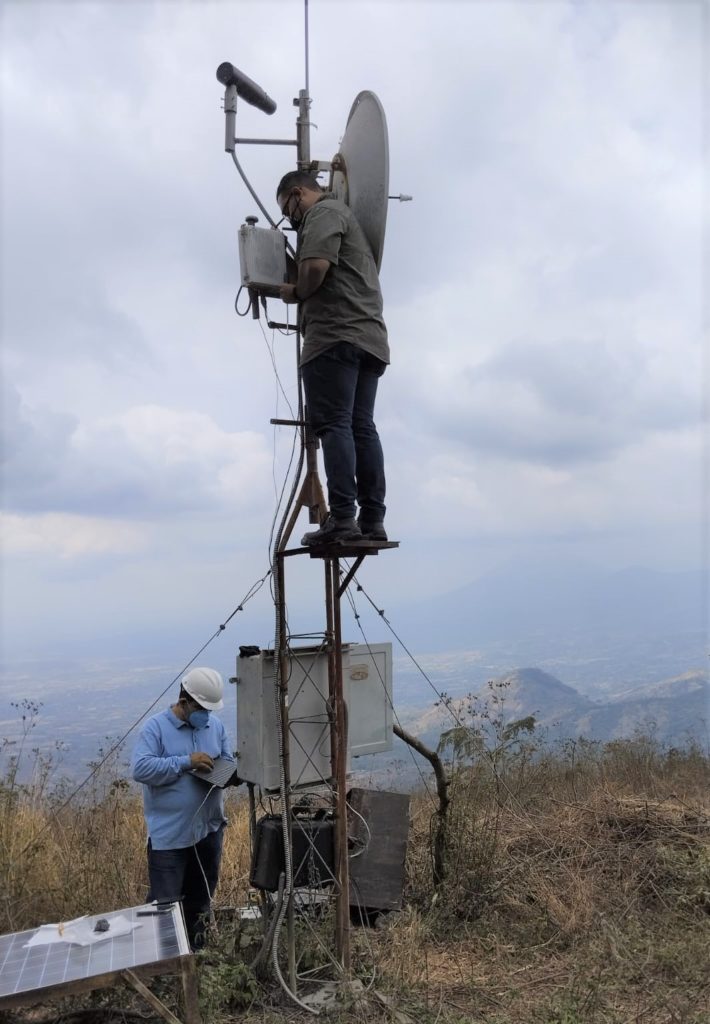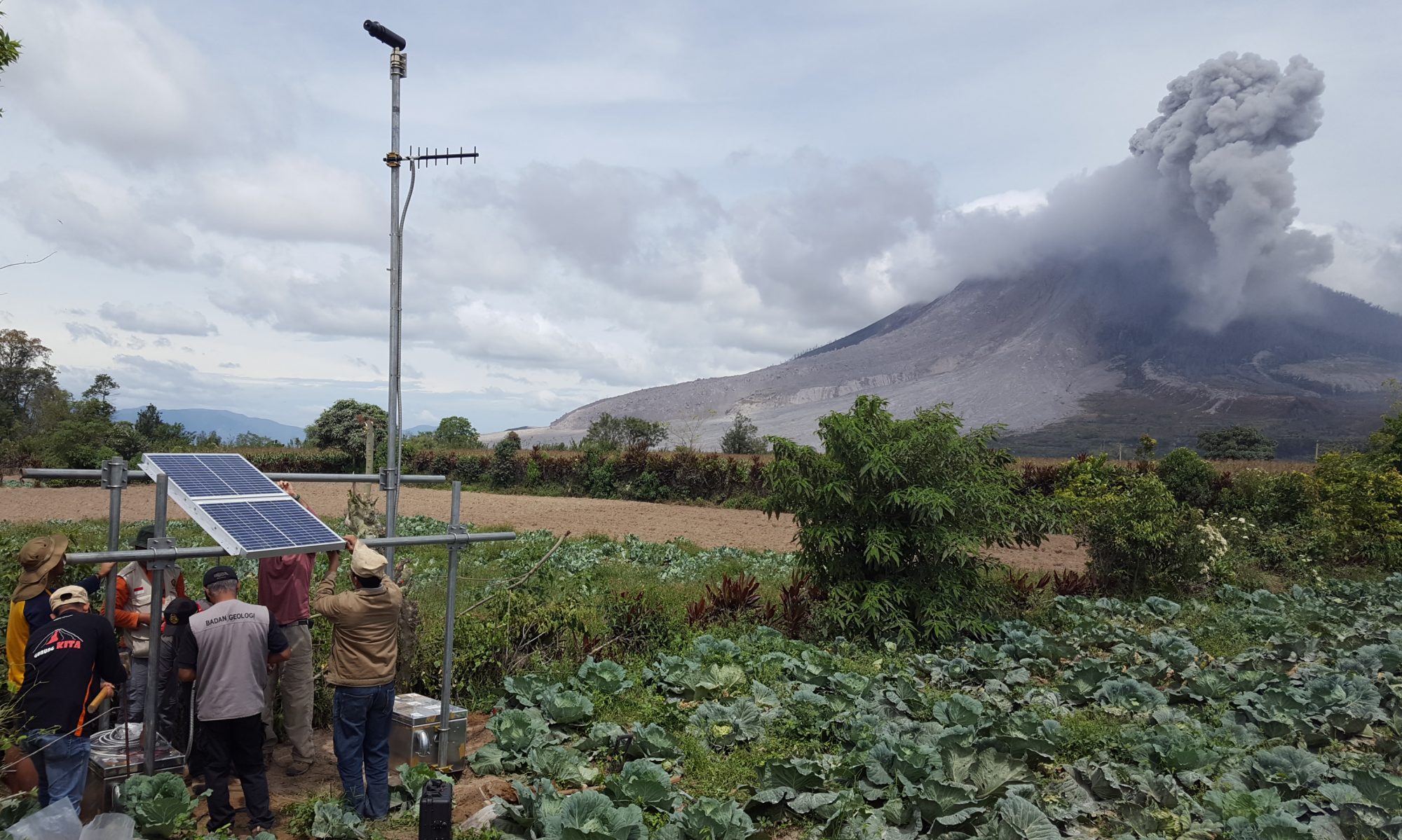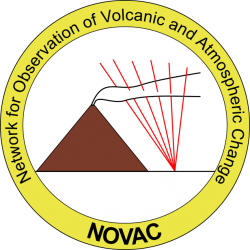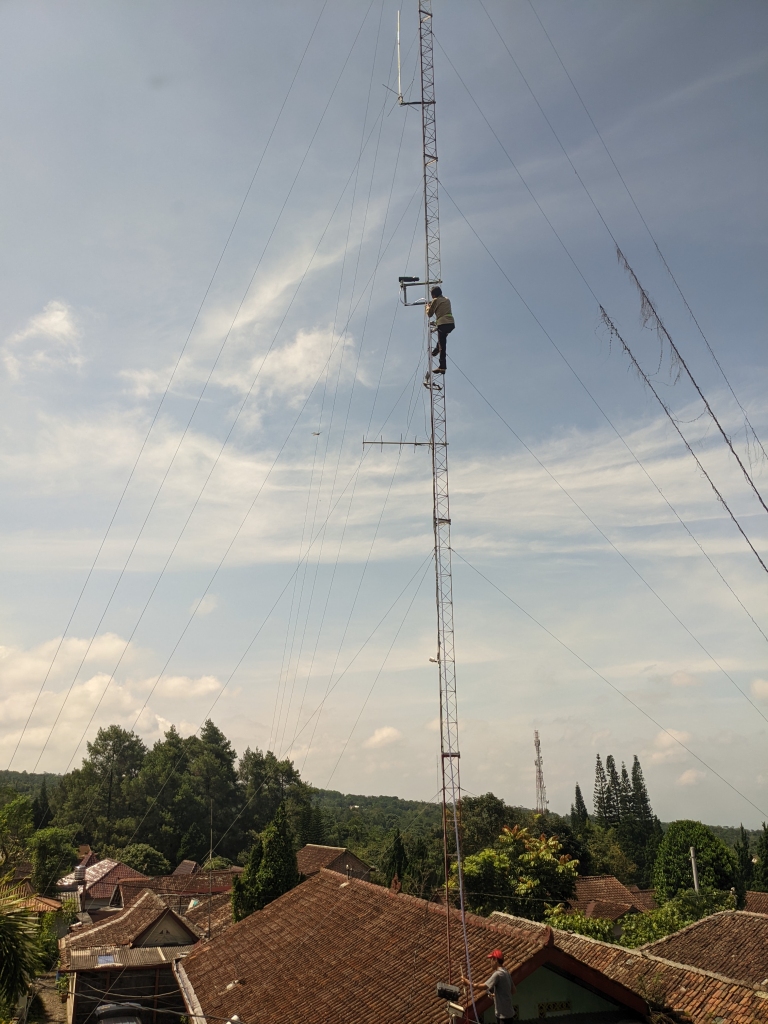San Miguel and Santa Ana volcanoes (El Salvador) are both very active, high-threat volcanic systems. San Miguel is El Salvador’s most active volcano and has experienced multiple eruptions in recent years, including in 2022 and 2023. Santa Ana hosts a highly acidic lava lake and fumaroles and has a geologic record of diverse eruption styles. Santa Ana is also a popular tourist destination, which amplifies the importance of tracking any changes in its volcanic activity. El Salvador’s Ministerio de Medio Ambiente y Recursos (MARN) was one of the first members of NOVAC and has installed multiple generations of NOVAC instruments across the country over the last ~15 years. With assistance from the USGS-USAID Volcano Disaster Assistance Program (VDAP), MARN gas geochemists and field engineers recently upgraded NOVAC Scanning DOAS instruments at both San Miguel and Santa Ana volcanoes. San Miguel is now monitored with two DOAS instruments and Santa Ana has a single, well-positioned instrument downwind. Additionally, MARN has a new MobileDOAS system for vehicle-based campaign measurements of SO2 at their volcanoes. Collectively, these updated NOVAC instruments will enable MARN to monitor gas emissions and how they relate to changing volcanic activity at their two most active volcanoes.



